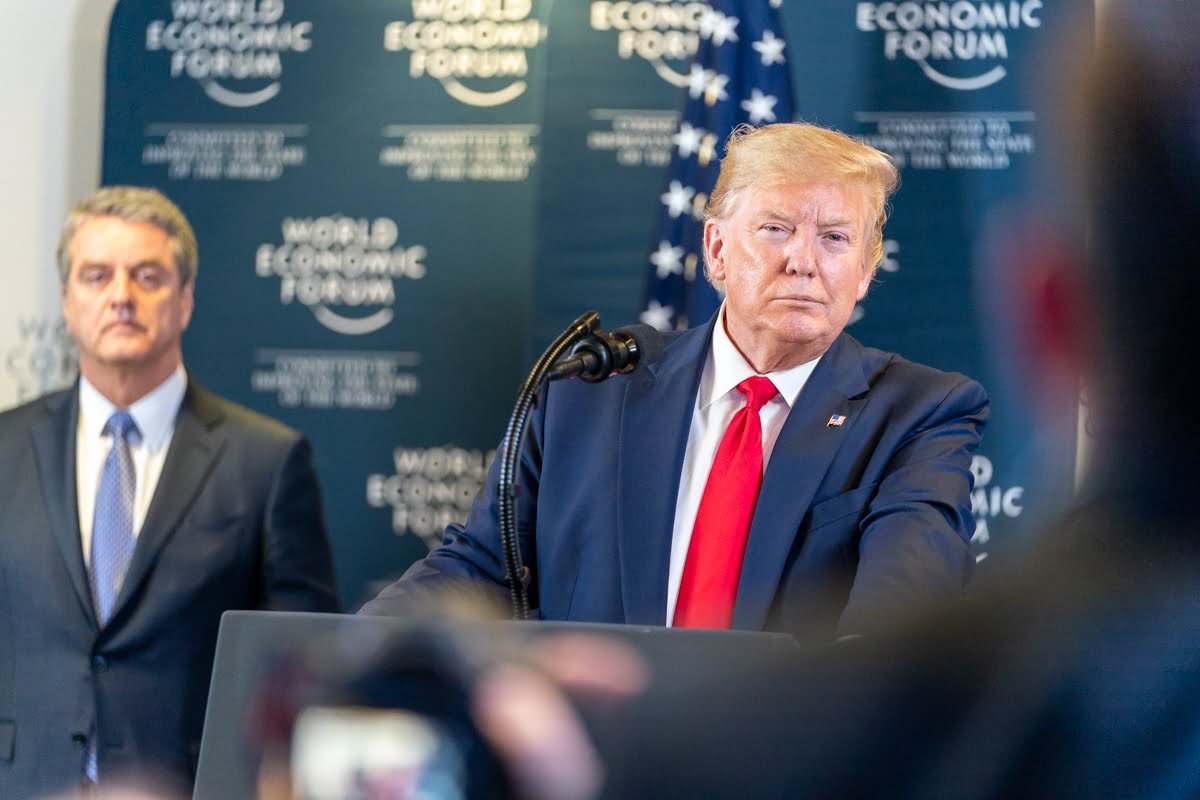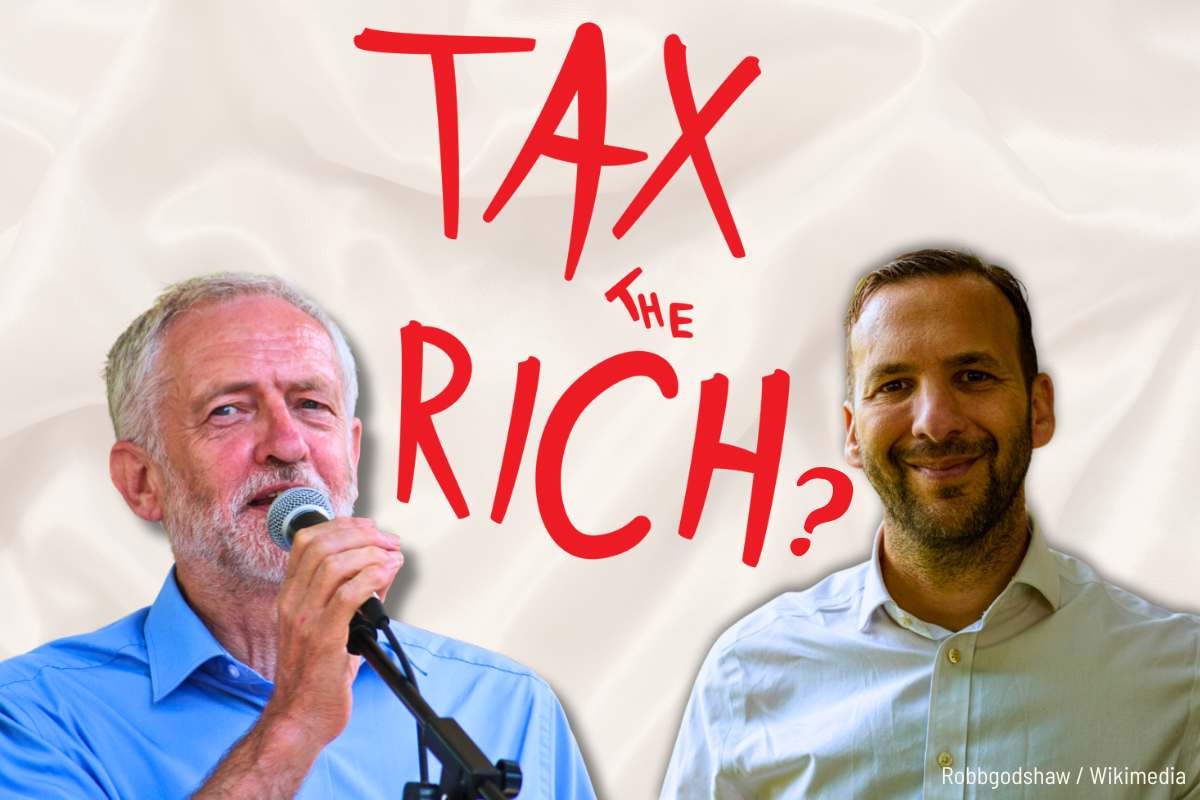The out-of-touch elite are meeting in Davos this week for their annual exclusive shindig. But the mood amongst the super-rich and their representatives will be glum and gloomy, with their liberal world order facing threats on all fronts.
Topics at this year’s World Economic Forum meeting in the Swiss alps show the anxieties that plague the ruling class. Official themes of the establishment event include issues such as: “fairer economies”; “how to save the planet”; “tech for good”; “the future of work”; and “beyond geopolitics”.
Stripping away the euphemism, these translate into plainspeak as: potential social explosions over inequality; the climate crisis; the overbearing dominance of Big Brother tech monopolies; the contradictions of automation under capitalism; and the clash of rival imperialisms and the breakdown of the status quo.
Pessimism
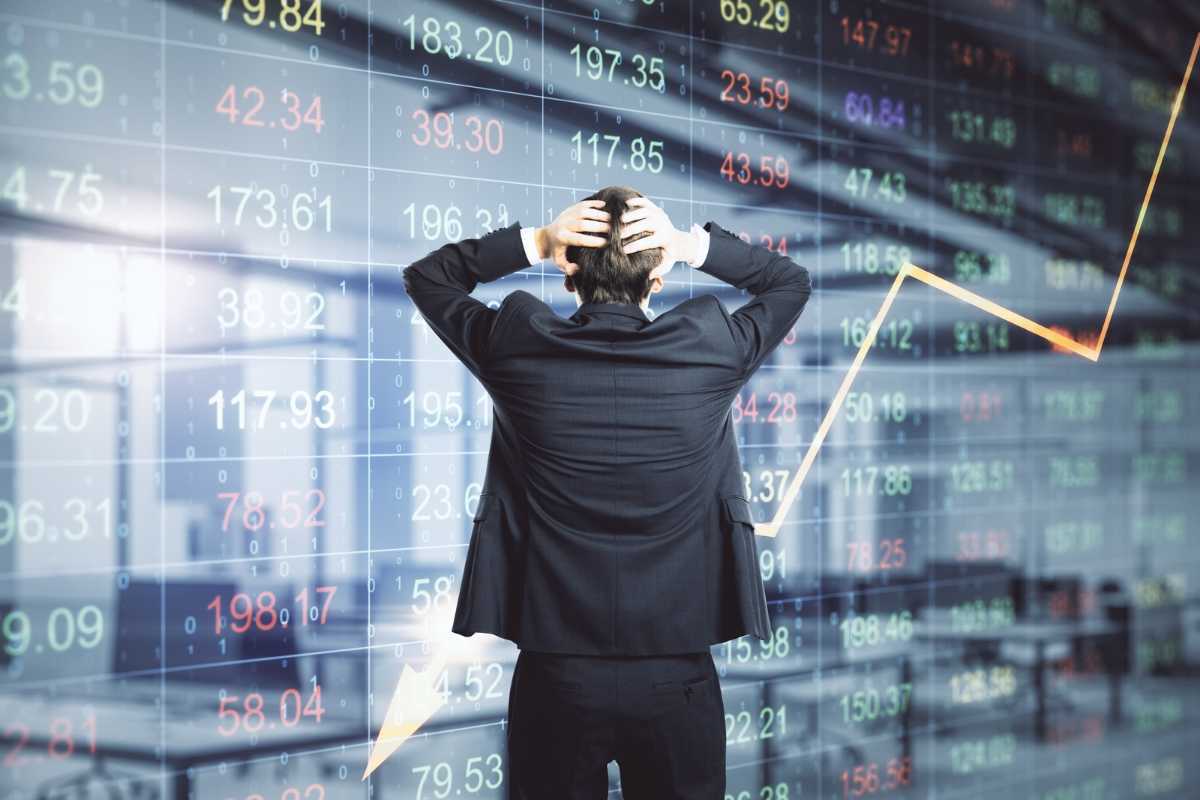 Last year, in July, the capitalists celebrated the fact that the US economy had officially registered its longest expansion in history, as it surpassed the previous record of 121 months (over 10 years) of continuous growth.
Last year, in July, the capitalists celebrated the fact that the US economy had officially registered its longest expansion in history, as it surpassed the previous record of 121 months (over 10 years) of continuous growth.
But for all the occasional optimism around ‘green shoots’ of recovery, the fact is that there has been no real recovery – especially not for the working class.
To get a sense of reality, one need look no further than the latest figures from the World Bank. In their latest predictions for global growth, the bank has downgraded its forecasts for the years ahead, predicting an international ‘synchronised slowdown’.
Six months ago, the outlook was for a worldwide economic growth of 2.6 percent in 2019 and 2.7 percent for the year ahead. But their most recent estimates put the equivalent numbers both at 0.2 percentage points lower.
In the advanced capitalist countries, the outlook is even gloomier. The US is predicted to decelerate from 2.3 percent growth in 2019 to 1.8 percent in 2020. The eurozone, meanwhile, is set to grow by a feeble 1 percent in 2020.
The same World Bank report highlights a number of other long-term problems facing the global economy – from mounting debts to slowing productivity growth.
Martin Wolf, senior economics editor at the Financial Times, raised the same anxieties in a pair of sweeping essays on “rigged capitalism” from last year, drawing attention to “an unholy trinity of slowing productivity growth, soaring inequality and huge financial shocks” that have gripped capitalism in recent decades.
“We need a dynamic capitalist economy,” Wolf exhorts. “What we increasingly seem to have instead is an unstable rentier capitalism, weakened competition, feeble productivity growth, high inequality and, not coincidentally, an increasingly degraded democracy.”
But this is nothing new. There is no ‘nicer’ capitalism to return to, as Wolf and other liberals and Keynesians like him imagine. The laws and logic of the capitalist system will always concentrate wealth in the hands of the few, at the expense of the many.
“The accumulation of wealth at one pole is, therefore,” as Marx explained in his magnum opus, Capital, “at the same time accumulation of misery, agony of toil slavery, ignorance, brutality, mental degradation, at the opposite pole.”
“If things stay as they are, economic and political performance is likely to get worse, until our system of democratic capitalism collapses, in whole or in part,” Wolf, an astute bourgeois commentator, concludes. “The way our economic and political systems work must change, or they will perish.”
These pessimistic predictions say far more about the future of the system than the yo-yoing numbers on the stock exchange, which are nothing but froth on the turbulent whirlpools and rapids of the real economy.
Combustible material
 The world economy, meanwhile, is far from making it into the clear. The more sober-minded representatives of capitalism can see the looming dangers on the not-too-distant horizon. As the Economist – a serious mouthpiece of the ruling class – remarks in discussing America’s historic expansion:
The world economy, meanwhile, is far from making it into the clear. The more sober-minded representatives of capitalism can see the looming dangers on the not-too-distant horizon. As the Economist – a serious mouthpiece of the ruling class – remarks in discussing America’s historic expansion:
“Recessions used to be triggered by housing bubbles, price surges or industrial busts. Now you should worry about globally interconnected firms, a financial system addicted to cheap money and a political system that is toying with extreme policies because living standards are not rising fast enough.”
In 2008, the immediate trigger for the slump was the subprime mortgage scandal, which set off a chain reaction of financial crisis. This was a symptom of the rotten debts that had accumulated after decades of the capitalists binging on credit in order to artificially extend the market.
This, in turn, was a reflection of the real underlying cause of the crisis: the contradiction of overproduction that lies at the heart of the capitalist system, as the constant need for expansion and drive for profits comes into conflict with the limits of the market.
Today, all manner of potential sparks exist, ready to ignite the tremendous amount of combustible material in the global economy. From the US-China trade conflict, to Brexit, to the tensions in the Middle East, to the Italian debt crisis, to the climate catastrophe, and many more besides: any of these could trigger the next world slump. Take your pick!
This plethora of catalysts for crisis demonstrates two important points. On the one hand, the fact that any number of incidents or events could precipitate the next recession demonstrates the fragility of the capitalist system at the present time.
As Hegel noted, necessity expresses itself through accident. And when so many potential ‘accidents’ exist that could bring down the entire economic structure of society, then this reveals the utter rottenness of the whole edifice of capitalism.
On the other hand, one notices that many of these possible triggers are deeply political in nature. This demonstrates how the system is caught in a vicious downward spiral, as economic and political crises feed upon one another.
At the time of the last crash, politicians had economic weapons in their arsenal that they could deploy to save the system. Banks and insurance firms were propped up by taxpayers; interest rates were lowered; the state stepped in to clean up the balance sheets of Wall Street and the City of London.
As a result of these measures, economic equilibrium was restored (temporarily) – but only at the expense of creating enormous social and political instability.
Nowhere is this more evident than in the wave of revolutions that has swept the globe in the last year: from Algeria and Sudan; to Iraq and Lebanon; to Chile and Ecuador. And this is before even mentioning the sharp political polarisation that has taken place in Europe and America, with the collapse of the so-called ‘centre ground’ of politics.
Out of ammo
 At the same time, the problem the ruling class now face is that they have run out of ammo to fight the next crisis.
At the same time, the problem the ruling class now face is that they have run out of ammo to fight the next crisis.
“There’s much less ammunition for all the major central banks than they previously had,” explained outgoing governor of the Bank of England (BoE) Mark Carney in a recent interview with the Financial Times, “and I’m of the opinion that this situation will persist for some time.”
As Carney notes regretfully, monetary policy is reaching its limits, with interest rates near zero – or even negative, in some countries. Quantitative easing (QE), far from stabilising the situation, has heightened market volatility and helped to inflate asset bubbles, particularly in so-called ‘emerging’ economies. And the injection of credit into the system has become a case of diminishing returns, like a drug user who requires an ever-bigger dose to feel the same high.
Hence why Carney and his new counterpart at the European Central Bank (ECB), Christine Lagarde, are now amongst those advocating a greater use of ‘fiscal policy’ – i.e. Keynesian stimulus and government spending.
The problem these policymakers face is the huge mountain of debt that exists as a result of the last crisis. With businesses and households still paying off these debts, and markets already saturated, there can be no hope of ‘stimulating demand’ in terms of increased investment or consumption going forwards.
According to recent estimates from the Institute of International Finance (IIF), global total debt reached a record high of $255 trillion at the end of 2019. This compares to an equivalent figure of less than $190 trillion a decade ago. And, most importantly, as the IFF notes, there are “few signs of slowdown in the pace of debt accumulation”.
This mountain of debt equates to over 300 percent of the world’s annual economic output (GDP), and includes over $70 trillion in government debt alone. Added to this is $120 trillion in business and household debts (equivalent to around 150 percent of global GDP), with the remaining $65 trillion or so coming from the debts of the financial sector.
Other recent estimates from S&P Global Ratings paint the same picture, showing that total world debts – corporate, government, and household – increased by 50 percent in the 10 years following the financial crisis.
This rise is particularly acute in terms of government debts, which were 77 percent higher in 2018 than a decade earlier. In other words, despite a decade of brutal cuts to services, pensions, and jobs, public debts have actually massively increased.
This is not just an issue affecting advanced capitalist countries – such as Japan (with a debt-to-GDP ratio of 238 percent, up from 201 percent a decade earlier, after the 2008 crash), Greece (180 percent, up from 126 percent), and Italy (135 percent, up from 112 percent).
In the same recent report, the World Bank also warns of a debt crisis in the ‘emerging’ and ‘developing’ economies. According to the bank, there has been an explosion of debt in the ex-colonial countries in recent years. The latest figure, for 2018, stands at 165 percent of GDP – an increase of 54 percentage points since 2010. As the World Bank notes, this is a larger wave of debt than any previously seen in the so-called Third World.
But the question of debt, in this respect, is not simply one of numbers. These debts represent money that must be repaid – and with interest. This is ultimately, therefore, a political question; a question of class struggle: who pays?
The euro crisis
 Despite a decade of cuts, the question of debt is still the spectre that haunts Europe. In the 10 years following the crash, debts have dramatically increased in Greece and Italy – the latter of which is now the epicentre of the euro crisis. And these debts show no sign of abating.
Despite a decade of cuts, the question of debt is still the spectre that haunts Europe. In the 10 years following the crash, debts have dramatically increased in Greece and Italy – the latter of which is now the epicentre of the euro crisis. And these debts show no sign of abating.
In the Greek myth of Sisyphus, our protagonist was forced by the gods to push an enormous boulder up the side of a mountain. But upon reaching the top, the rock would roll back down, consigning Sisyphus to an eternity of torture and torment. So it is for the working class, who after enduring years of austerity and attacks, have nothing to show for their pain and suffering.
The problem for the ruling class is that nowhere do they have ‘strong and stable’ governments capable of carrying out the cuts necessary to tame debts and deficits, and restore competitiveness and confidence for the capitalists.
Governments in Greece, Italy, and Spain are all politically fragile. In France, Macron has faced a huge and militant backlash to his attempts to impose austerity on French workers – both in terms of the magnificent gilets jaunes movement, and the recent strikes against pension ‘reform’.
In Germany, meanwhile, things have turned into their opposite. Until recently, the German economy was frequently referred to as the ‘powerhouse’ of Europe, based on its competitive industries, such as its car manufactures and mittelstand companies. But now the country faces its own looming recession.
“Europe’s largest economy grew by only 0.1 per cent in the three months to September, narrowly avoiding a recession,” noted the Financial Times recently. “Full-year figures for German economic growth are… expected to show meagre growth of 0.5 per cent in 2019, down from 1.5 per cent the previous year.”
Ultimately, this is a reflection of the interconnectivity of the capitalist world market. Like mountain climbers scaling a slope, joined together by a rope, the fate of each country is connected to the rest. When one falls, it is only a matter of time until the rest follow.
This is even more the case inside the European Union, and particularly the eurozone. As the Marxists highlighted at the dawn of the single currency, the European project was – and still is – doomed to fail on a capitalist basis.
For a time, as long as capitalism was booming and everyone was heading in the same direction, the tensions between different economies within the bloc could be subdued. The EU and euro then were seen as a great boon all round, providing access to cheap credit for the peripheral countries, and a larger market for the commodities of the big European monopolies.
But with the onset of the crisis in 2008, everything went into reverse. Suddenly different economies were pulling in different directions. The weaker and less competitive economies required cuts to wages and conditions, demanded on behalf of the capitalists by technocrats and politicians in Brussels and Berlin.
Now, however, the chickens are coming home to roost. German exporters – facing a slowdown in China, a shrinking market in Europe, and the threat of tariffs and environmental regulations – are seeing sales drop and profits dry up.
“All in all, there are still no signs at all of a bottoming out for German industry,” said Carsten Brzeski, an economist at ING, speaking to the FT. “Instead, the freefall continues.”
Starting her new job at the ECB, Christine Lagarde has been left to pick up the pieces of the euro crisis, which is far from being resolved. But with what tools? And what political backing? And again, the question is ultimately the same: who pays?
Clearly it will not be the weaker peripheral economies of Italy, Greece, and even Lagarde’s own motherland of France, where the capitalists are demanding austerity and attacks. Nor will it be the stronger, more competitive economies of the ‘New Hanseatic League’, who are firmly against the ‘responsible’ and ‘prudent’ north subsidising ‘lazy’ workers in the south.
But as Benjamin Franklin, one of the Founding Fathers of the United States, remarked upon signing the American Declaration of Independence: they must all hang together, or, most assuredly, they shall all hang separately.
Within the confines of the capitalist system, therefore, the European Union is headed for a break up. Only the demand for the Socialist United States of Europe offers a way forward for the working class.
America First
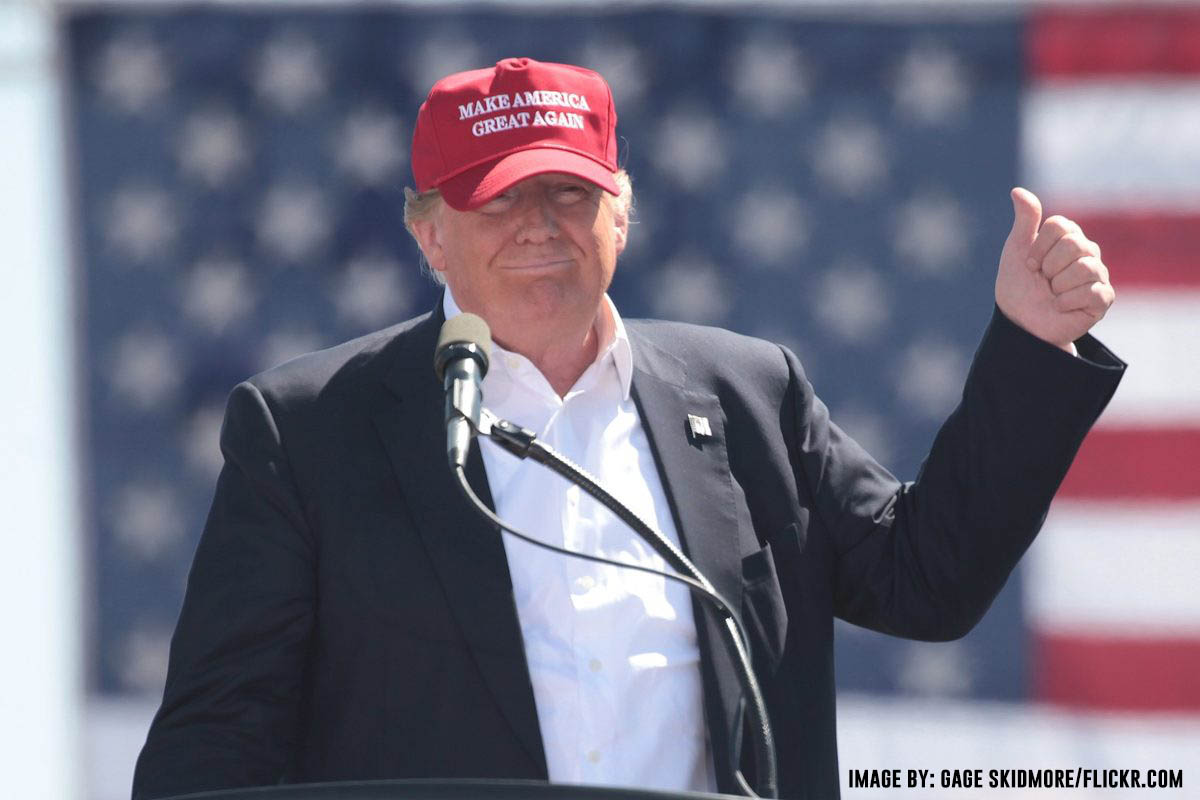 Europe also finds itself caught in the crossfire of the ongoing trade war between Donald ‘America First’ Trump and the rest of the world.
Europe also finds itself caught in the crossfire of the ongoing trade war between Donald ‘America First’ Trump and the rest of the world.
“European Union: very, very difficult,” the US President told a meeting of the New York Economic Club in November last year. “The barriers they have up are terrible, terrible. In many ways, worse than China.”
These sentiments were recently echoed by Washington’s leading trade representative Robert Lighthizer, who described US-Europe trade as a “very unbalanced relationship”.
Following a dispute over state subsidies to European aircraft manufacturer Airbus, the Americans imposed tariffs on $7.5 billion of EU exports last October. Now Trump’s administration is threatening to increase these, and White House officials have not ruled out further measures aimed at car manufacturing rivals in Europe.
“We have a basic trade problem with Europe,” Lighthizer continued. “We have to figure out a way to sell more in Europe. And I think we’re going to undertake that.”
This demonstrates the clear aim of Trump’s trade war: to boost the profits of US big business – at the expense of everyone else.
But whilst Europe has come under fire recently, the primary target for the US President’s ‘America First’ campaign is clearly China.
The dispute between the world’s two largest economies and imperialist powers has been simmering away for around 18 months now.
Starting with a tit-for-tat set of tariffs on $50bn worth of goods and services in the summer of 2018, the US quickly threw its significantly greater weight at the Chinese, imposing a 25 percent duty on $200bn worth of goods in September of the same year, followed by a further 25 percent-$200bn in May 2019. China could only respond on each occasion with 25 percent levies on $60bn worth of commodities.
A recent deal between negotiators led to an agreement to reduce some US tariffs in exchange for more Chinese purchases of American products. But tariffs of 25 percent on $250bn worth of Chinese exports remain in place.
This temporary truce is a reflection of the anxieties of the ruling classes on both sides. The rise of protectionism, above all else, has the potential of pushing the global economy into an outright depression.
“Politicians need to look beyond their short-term national struggles,” implored an FT editorial from October last year, “towards the bigger picture of an international economy beginning to buckle under the weight of trade wars fought on multiple fronts.”
The parallels with the 1930s are clear. Back then, it was not simply the Wall Street Crash that plunged the world into a deep slump, but the ‘beggar thy neighbour’ policies that followed the initial financial crash, as each country sought to export the crisis elsewhere.
The current world trade crisis is epitomised by the paralysis at the WTO. The Bretton Woods institution has become an empty husk, unable to adjudicate on international trade disputes because the Trump administration has refused to appoint the judges required to oversee cases brought before the organisation.
This deadlock, in turn, reflects the breakdown of the old world order, built around US imperialism in the postwar period.
Soybeans and semiconductors
 During trade talks in October last year, Washington negotiators attempted to tie their threatened tariffs to the question of human rights abuses by the Chinese state in Xinjiang. In the other direction, European leaders have called for carbon-related tariffs to be imposed on US products.
During trade talks in October last year, Washington negotiators attempted to tie their threatened tariffs to the question of human rights abuses by the Chinese state in Xinjiang. In the other direction, European leaders have called for carbon-related tariffs to be imposed on US products.
In both cases, however, such talk is pure hypocrisy. The imperialists everywhere have always prioritised profits and access to markets over democracy, human rights, and the protection of the environment.
Nowhere is this more obvious than in China, where Western firms are desperate to gain access to the enormous Chinese market at any cost. Profit-hungry corporations like Disney (amongst many others) have shown that are more than willing to kowtow before Beijing in order to maintain business.
But whilst Western corporations are desperate to sell their wares in the rapidly expanding market of China, US big business (in particular) is also wary of the growing threat of competition coming from its Chinese rivals, especially in the world of tech.
This is the reason behind one of the key insistences coming from American negotiators in relation to the US-China trade war: for Beijing to roll back its support for frontier sectors such artificial intelligence.
In short, this trade conflict is less about soybeans and steel, and more about semiconductors and supercomputers: means of production that would threaten the dominant position of US (and European) industry in the long run.
But this is where the Chinese leaders are only willing to go so far in their compromises with the US. They can accept demands for buying up more American produce (within limits). But they will not allow themselves to be hampered when it comes to their mission to ‘make China great again’.
And this is why the current trade settlement is more of a temporary ceasefire, and less of a permanent rapprochement – something that will never be possible between two rival imperialist powers, one declining and one rising; even less so at a time when the world market is saturated, and very possibly soon to be shrinking once again.
When America sneezes…
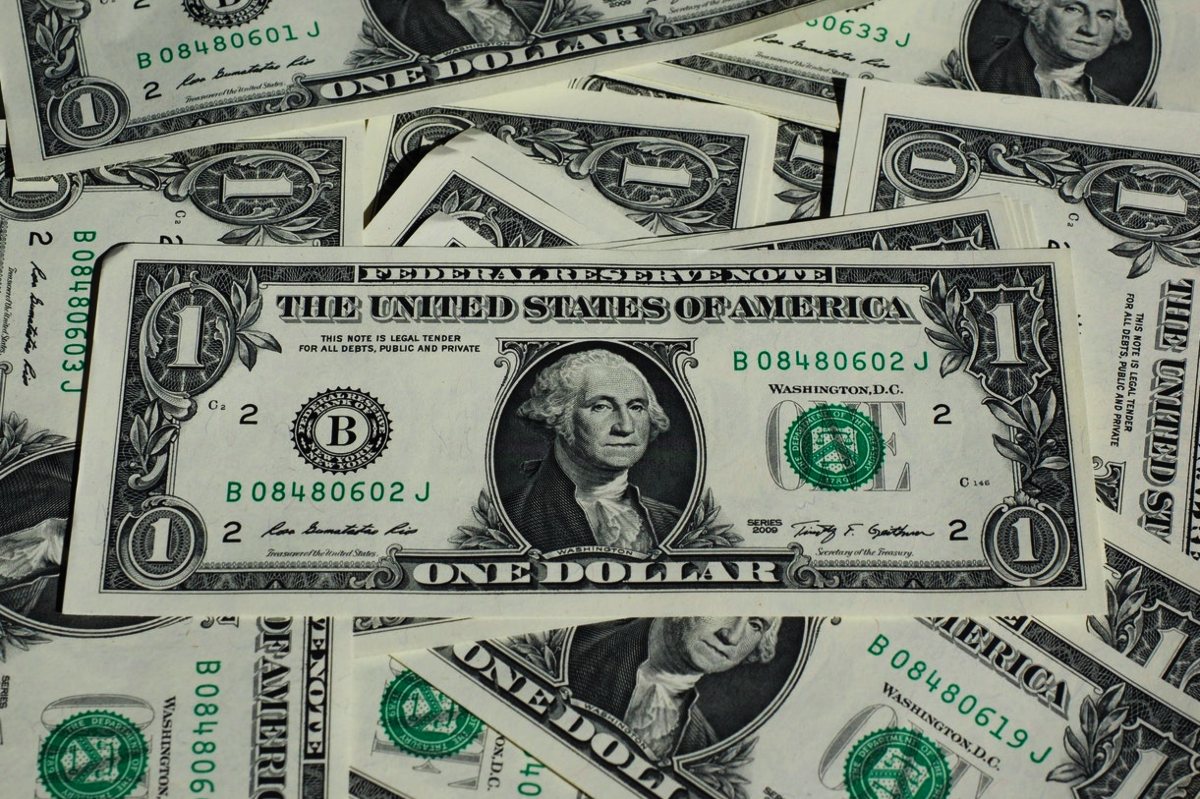 As a result of its dominant position in the global economy, when America sneezes, the rest of the world catches a cold. US capitalism’s international importance is reflected in the unrivalled power of the dollar, which in effect acts as the world currency. This in turn makes the dollar and US treasuries a safe-haven for nervous investors. The decisions made at the US Federal Reserve (‘the Fed’), therefore, have a noticeable impact across the world.
As a result of its dominant position in the global economy, when America sneezes, the rest of the world catches a cold. US capitalism’s international importance is reflected in the unrivalled power of the dollar, which in effect acts as the world currency. This in turn makes the dollar and US treasuries a safe-haven for nervous investors. The decisions made at the US Federal Reserve (‘the Fed’), therefore, have a noticeable impact across the world.
To see this, one need look no further than a pair of examples in the backyard of US imperialism – Latin America.
On the one hand, in Venezuela and elsewhere, we see how the Trump administration has deployed the dollar as yet another weapon in their arsenal, with US sanctions designed to cripple the economies of those countries that fall foul of American imperialism.
On the other hand, in Argentina, alongside other ‘emerging’ countries, we see how economies have been sent into a tailspin as a result of the Fed’s decision to ‘taper’ QE – that is, to gradually wind-down this injection of cheap money into the global system.
This QE money has largely acted as ‘hot’ money, rushing in and out of countries; speculated on property and share-buybacks; inflating asset bubbles rather than being invested in real production. Again, this demonstrates how QE, far from stabilising the world economy, has added to capitalism’s volatility internationally.
This speculation is shown in the frothy stock market and in the prices of commodities such as gold. It is also seen in the ‘cryptocurrency craze’ and investors’ frantic chase to find the next tech ‘unicorn’, as well as in the money now poured into the art and fine wine markets.
Government bonds are also in high demand – providing a refuge for worried investors, who can find no other profitable avenues for their cash. This is the reason behind the ‘inverted yield curve’, whereby long-term loans command lower interest rates than short-term loans, signalling that the capitalists are losing faith in their own system.
Trouble in China
 In China, meanwhile, growth is slowing to dangerous levels. The World Bank now predicts that China – for the first time since 1990 – will dip below 6 percent annual growth. This figure is widely regarded by the authorities as a threshold, below which the economy cannot keep up with the demand for jobs, as millions flood into the cities from the countryside.
In China, meanwhile, growth is slowing to dangerous levels. The World Bank now predicts that China – for the first time since 1990 – will dip below 6 percent annual growth. This figure is widely regarded by the authorities as a threshold, below which the economy cannot keep up with the demand for jobs, as millions flood into the cities from the countryside.
At the same time, the regime in Beijing finds itself walking on an economic tightrope, balancing between a debt-fuelled expansion and a slump-inducing contraction of credit.
The build up of debts – particularly amongst local governments, as they pour money into Keynesian public investment projects – has certainly rung alarm bells at the top. Total Chinese debt (corporate, household, and government) now equates to $40 trillion, or 300 percent of GDP, according to IIF estimates last year. This is 15 percent of all global debt.
But to take away the punch bowl at this stage is equally dangerous. Similarly to the West, the Chinese capitalists have become addicted to cheap money. ‘Zombie capitalism’ – uncompetitive corporations kept alive by a drip feed of low interest rates and government subsidies – stalks the land.
At the same time, this same state support exacerbates the global crisis of overproduction, as world markets find themselves flooded with steel, ships and smartphones.
The impact of this can be seen on the other side of the world, in the closure of plants and factories in Britain, creating job losses at Welsh steel plants or the Harland and Woolf shipyard in Northern Ireland. But it is also reflected in the profit warnings of big tech firms such as Apple, who are struggling to sell their mass of products on the glutted global market.
This, again, explains the rise of protectionism; in turn demonstrating how the productive forces globally have outstripped the narrow limits of the nation state and the capitalist market. It is a damning indictment of the profit system, as Marx and Engels so accurately described in the Communist Manifesto:
“Society suddenly finds itself put back into a state of momentary barbarism; it appears as if a famine, a universal war of devastation, had cut off the supply of every means of subsistence; industry and commerce seem to be destroyed; and why? Because there is too much civilisation, too much means of subsistence, too much industry, too much commerce.”
Breakdown
 Earlier on the same pages, Marx and Engels explain how: “The need for a constantly expanding market for its products chases the bourgeoisie over the entire surface of the globe. It must nestle everywhere, settle everywhere, establish connections everywhere.”
Earlier on the same pages, Marx and Engels explain how: “The need for a constantly expanding market for its products chases the bourgeoisie over the entire surface of the globe. It must nestle everywhere, settle everywhere, establish connections everywhere.”
‘Globalisation’ was once a source of strength for the capitalists, helping them access cheaper labour and raw materials (as well as bigger markets), and thus gain juicier profits. For this reason, CEOs and investors licked their lips at the prospects that opened up with the fall of the Soviet Union and the move to capitalism in China.
Now, however, globally interconnected supply chains have created a headache for the bosses. With tariffs and trade barriers rising everywhere, large multinational firms are struggling to cope with the possible need to find new, more local suppliers. All of this dislocation has the effect of increasing costs, creating a ‘supply side’ shock that pushes up prices.
Instability in the Middle East, with sabre-rattling between the US and Iran, has the same effect, causing oil prices to climb, which in turn feeds through to greater energy costs, and thus a generalised rise in the price of commodities. This partly accounts for Washington’s reluctance to escalate the conflict with Tehran.
At the same time, for many policy makers, it is not the threat of inflation, but the lack of it, that represents a bigger concern. With markets glutted and ‘excess capacity’ across the board, there is a huge downward pressure on prices that has led to subdued inflation and even worries of ‘deflation’.
The unstable balancing act that central bank chiefs are forced to conduct to avoid either rocketing inflation or the doldrums of deflation reflects the general instability of the capitalist system, as it lurches from one crisis to the next.
Their economic models are breaking down. The ‘Phillips curve’ that once linked inflation and unemployment is now largely redundant. And back in the real world, if supply shocks hit at the same time as the next downturn, then the capitalists will find themselves facing a perfect storm of ‘stagflation’, as seen last seen during the global crisis of the 1970s: spiralling prices alongside economic stagnation and slump.
The new normal
 All of this is a recipe for increasing political polarisation, social instability, and sharpening class struggles. And this, ultimately, is the importance of analysing the processes taking place in the global economy – not to predict events with a crystal ball, but to understand the impact of capitalism’s crises on consciousness and the development of the world revolution.
All of this is a recipe for increasing political polarisation, social instability, and sharpening class struggles. And this, ultimately, is the importance of analysing the processes taking place in the global economy – not to predict events with a crystal ball, but to understand the impact of capitalism’s crises on consciousness and the development of the world revolution.
The fact is that there will be no return to the past. The status quo is well and truly broken. There is no going back to ‘normality’. As the past decade of storm and stress – of struggle and strife – attests: we have entered a new epoch; a ‘new normal’.
This means that the question of socialist revolution will be firmly on the agenda in the coming period. The task that lies ahead is to overthrow this rotten system and consign capitalism to the dustbin of history, where it belongs.

